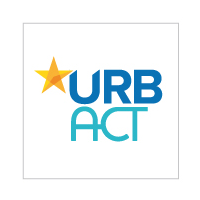24th-26th March 2010: 5th Seminar in Alicante and Valencia (Spain)
Edited on
23 February 2015Thematic Conference on Economic & Social benefits: “Measuring the economic and social impact of cruise tourism and urban regeneration”.
Concept paper
Theme 2 “ Economic and Social Benefits ”
Measuring the economic and social impacts of cruise tourism and urban regeneration
Plans and projects aimed at developing cruise tourism and urban regeneration are essentially carried out as economic and social “generators” to bring several benefits for local communities (social and economic spillovers, and more in general, a better quality of life).
It is always useful to try to carefully predict – through a formal impact assessment study including, if possible, quantitative indicators - the different sorts of impacts (economic, social or environmental) that are expected to be generated through the planned projects.
An impact assessment allows the city to verify that the project, once completed, will really comply with the targets of the local community and the best solution, for reaching these targets, if compared with other alternatives.
In fact, it is not so rare (in cruise tourism as well) that projects perceived as substantial generators of local benefits finally fail to comply effectively with expectations, causing, on the contrary, a heavy use of local resources.
Moreover, a professional and systematic approach to the social and economic impact assessment of projects and plans allows a very flexible and target oriented design process, for the reason that the project or action plan can be progressively fine-tuned with the purpose of reaching, as much as possible, adequate levels of positive impacts for the different stakeholders.
What for who: the social impacts and the distribution of effects to the stakeholders
This also explains why a careful identification and assessment of the different components of the expected benefits from cruise activities is so crucial, and why the plans that generate the widest ranges of benefits should be selected, paying specific attention to wider (direct and indirect) positive social impacts different from the direct impact generated by the expenditure of cruise tourists or service providers.
Among these, you can mention the creation of new jobs (related to sightseeing or to urban regeneration projects for example) available for disadvantaged social groups, or developing “social mix” in central districts through regeneration. Providing education and training centres for young people that could be employed in the cruise sector can also to be considered, for some cities, as a very remarkable potential of action plans and should be accurately assessed.
The specific focus on the social aspect suggests that any really good quality impact assessment should be able to show also the “distribution” feature of the project, which does not depend on the total amount of value induced by the project only, but on what are the specific stakeholders and social or economic groups affected by the positive (or negative) spillovers.
How to assess the impact of the LAPs carried by the CTUR Partners: questions and answers
During the seminar in Alicante/Valencia, the focal question will be the following: “how, and how much, different types of urban actions and projects related to the cruise sector can generate economic and social value for the different stakeholders of local urban communities”.
The advantages for the CTUR partners to implement social and economic impact assessments of their LAPs will be also stressed.
With this aim, a “LAP impact assessment practical toolkit” will be delivered, to encourage partners to include in their LAPs a formal (even if very concise) social economic impact assessment.
The meeting will be also the occasion to discuss what are the “beliefs”, the “assumptions” the “expectations”, and the “knowledge” which induce policy makers to carry out plans and projects related to the cruise sector and what is the role (if any) played by formal impact assessment procedures and what are the features of these assessments.
Specifically, partners will be invited - during the presentations of LAPs and case studies - to highlight the driving forces which led the specific projects and the assessment framework adopted.
During the working sessions, several case studies (from CTUR and non CTUR cities as well) aimed at exemplifying different kinds of “impacts” and actions implemented to increase the positive effects of cruise tourism for different categories of stakeholders will be illustrated.
Together with the presentations dealing with the specific social-economic impact issue, other case studies carried out by the hosting cities, and related to other thematic areas, will be presented.
 Submitted by URBACT on
Submitted by URBACT on
